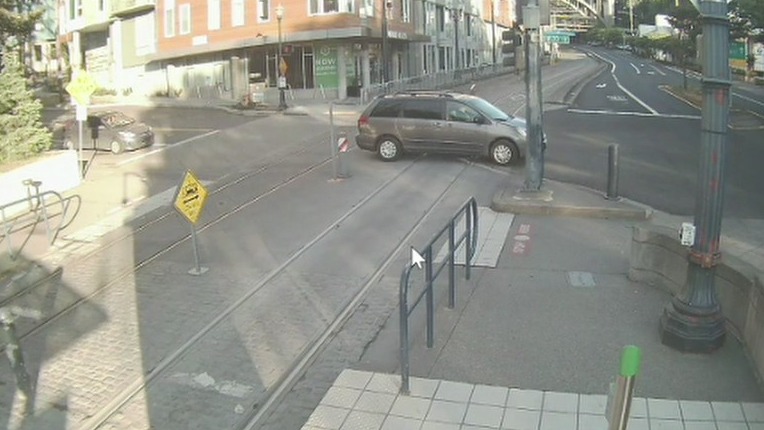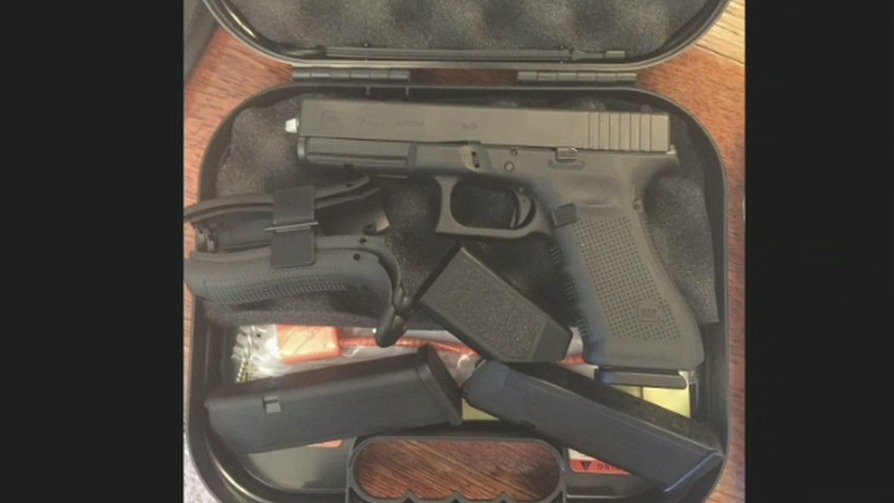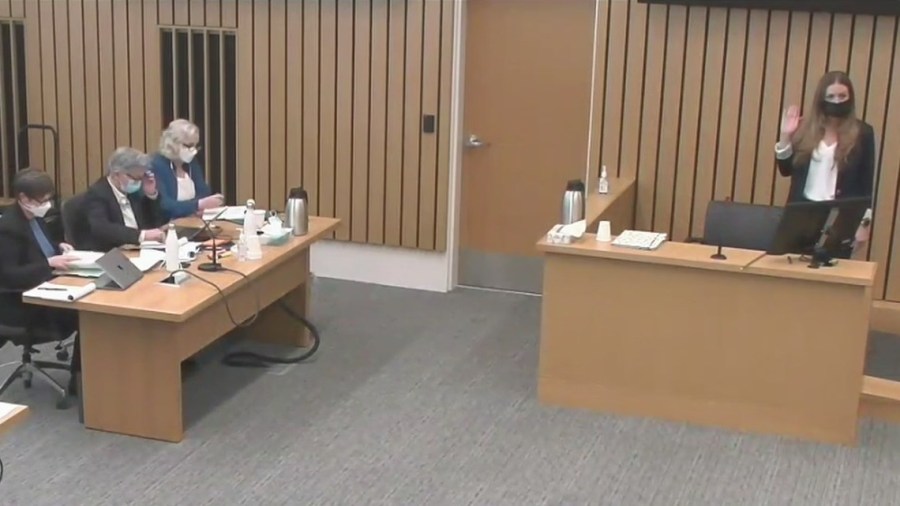PORTLAND, Ore. (KOIN) – Four detectives testified Tuesday in the murder trial of Nancy Crampton Brophy and pieced together the events that took place after she was informed of her husband’s death.
Crampton Brophy is charged with murdering her husband, Daniel Brophy, at the Oregon Culinary Institute on June 2, 2018. Tuesday marked the sixth day of her trial.
Testimony is expected to continue on Wednesday in the Multnomah County court of Judge Christopher Ramras.
Who testified Tuesday
Detective Anthony Merrill was the first witness to take the stand Tuesday, as he continued his testimony from Monday afternoon. This is the second time he testified in the trial.
Merrill was followed by detectives Scott Broughton and Rico Beniga, who accompanied Crampton Brophy home the afternoon of her husband’s murder, after detectives informed her of his death.
Officer Aaron Dauchy then spoke about how he was monitoring TriMet video for the Portland Police Bureau at the time of the murder and how he examined the video to look for what appeared to be Crampton Brophy’s minivan. He obtained a partial license plate number from the image for investigators.
Detective Travis Law then explained how he collected a list of all 2004-2005 Toyota Sienna minivans in Oregon at the time of the murder and compared them to the appearance of a Toyota Sienna minivan that was seen near the crime scene at the time of Daniel Brophy’s murder.
The last witness to testify Tuesday was Kelsey Guay, an analyst for Portland Police Bureau. She spoke about tracking the Brophys’ cell phone transactions and piecing together surveillance video from Goose Hollow on June 2, 2018.
Here are six takeaways from day six of the Nancy Crampton Brophy murder trial:
1. Van like Nancy’s seen near crime scene
As Merrill mentioned Monday, he was surprised to see what appeared to be Nancy Crampton Brophy’s minivan drive past surveillance cameras in the Goose Hollow area, near the culinary institute, at 7:08 a.m. and 7:28 a.m. When speaking to detectives, Crampton Brophy had said she was home that morning and did not mention driving to the city before she came to see what was going on at OCI.
Investigators believe Daniel was killed shortly after he disarmed the alarm at OCI at 7:22 a.m.

Merrill said Crampton Brophy was absolutely not a suspect when detectives interviewed her and told her about her husband’s death. However, after seeing the van that resembled Crampton Brophy’s in a surveillance video recording, Merrill asked one of the detectives who had accompanied her home to take pictures of the van she was driving.
After obtaining more surveillance video from the area, Merrill saw that the van arrived before 7 a.m. It parked near KGW between 7:01 a.m. and 7:07 a.m. It traveled out of the surveillance video viewing area at 7:09 a.m. and reappeared at 7:28 a.m., as it drove away from the area toward Highway 26.
2. No leads ever led away from Nancy
In their cross-examination, the defense asked Merrill about several people who were seen near OCI the morning of Daniel’s murder. Merrill said investigators had not been able to identify many of them and had not contacted them. The only person they’d been able to contact was someone they identified as Oscar Taylor. However, Merrill said they ruled him out as a suspect because he was seen walking away from OCI at the time of the crime and was far enough away that they don’t believe he could have committed it.
He said that in the days the investigation continued at the school, no one contacted police to tell them they’d seen anyone suspicious in the area.
“I feel like we went the extra mile on this investigation. I feel like we worked our butts off on this investigation,” Merrill said. “We were searching for information about anybody and everybody.”
A prosecutor asked Merrill if any of the leads detectives received ever led them away from Crampton Brophy as a suspect and he said they did not.
3. Retrieving the Brophys’ gun

While speaking with detectives after learning of her husband’s death on June 2, 2018, Crampton Brophy told them the couple had purchased a handgun at a gun show a few months earlier. She said they purchased it after the shooting at Marjory Stoneman Douglas High School and after they learned how many of their friends and family members owned guns. She said when they brought the gun home they regretted their decision and didn’t want it anymore. She said they put it up in a closet and had never used it.
When detectives accompanied Crampton Brophy home, they planned to make sure the gun was where she said it was – in case Daniel had brought it to work with him – and to take it back with them for safe keeping.

When detectives Broughton and Beniga opened the case for the Glock handgun, it appeared all the pieces were there and there was a zip tie on the slide and barrel, just as Crampton Brophy had said there was. She said this was proof the gun hadn’t been fired. But, the detectives both noticed the slide and barrel was not seated into place as it should be, as though it had been removed. Beniga said this is known as a gun being “out of battery.” He said a gun must be intentionally manipulated in order for its slide and barrel to be removed.
He said for a gun to be considered safe, he would not expect it to look like that.
4. “Why? I wasn’t there this morning.”
While at the Brophys’ home, Beniga received a phone call from Detective Merrill informing him that a van resembling Crampton Brophy’s was seen in surveillance video near the crime scene earlier that morning. Merrill asked Beniga to take photos of the van while he was at the Brophys’ home.
Beniga stepped outside the house, took the pictures, then returned inside and asked Crampton Brophy if it was OK he had taken photos of her van. He said he was documenting vehicles that were at the scene.
She replied by saying, “Why? I wasn’t there this morning,” according to Beniga’s report. He said she did grant him permission to keep the photos and send them to other detectives.
5. Was Nancy’s license plate on the van?
Officer Aaron Dauchy was assigned to TriMet at the time of Daniel’s murder and responded to transit-related calls. He had access to all recorded TriMet video, including video from the Goose Hollow Transit Station the morning of June 2, 2018. He said in July 2018, an officer involved in Daniel’s homicide investigation contacted him and asked him to look for video from the morning of June 2 that shows a gray Toyota Sienna minivan in the area.
Dauchy found the video and zoomed in on a frame that made the license plate mostly visible. He could decipher the first three numbers: 067. He felt certain the first letter was B, but was uncertain about the second letter (it was either a Q or a D) and the third letter (either a K or an X).
The investigating officer told Dauchy the license plate of the vehicle they believed was on the video was 067 BQX.
Detective Travis Law testified Tuesday saying he collected a list of all 2004-2005 Toyota Sienna minivans in the state from the Department of Motor Vehicles. This is the make, model and year of the vehicle Crampton Brophy was driving at the time. He came up with a list of 21 vehicles and split the list with Detective Eric McDaniel.
Law said he had 12 vans on his list. Of those, only two were the same color as the van Crampton Brophy drove. None of them had rims that matched the rims in the surveillance video recorded near the scene of the crime and none of them had license plate numbers that matched Crampton Brophy’s.
McDaniel has not testified and the information about the vans on his list has not been shared with the court.
6. Nancy’s phone did not leave home at the time of the murder
Kelsey Guay testified Tuesday saying at the time of the crime, she was working as an investigative analyst for the Portland Police Bureau. She said Detective Merrill had received cell phone records from AT&T for the Brophys’ cell phones on the day of the murder and 6 months before Daniel’s death. Merrill asked her to see if she could use the records to track the Brophys’ locations.

Portland Police Bureau had software that allowed Guay to enter in the data and it would show the transactions the Brophys’ cell phones made to nearby cell towers. She explained that phones can connect with a tower for calls, texts, and data transmissions – which are instances when cell phone users open apps or connect to the internet. She said AT&T phones send data transmissions regularly without someone necessarily connecting to an app and that it’s impossible to know if the transmission was done by the phone itself or because someone was using it.
Guay looked at the months of phone records to get a sense of the Brophys’ routines, to figure out what cell towers received transactions when they were home at night and what days they went to work.
The night before Daniel’s murder, she said both Crampton Brophy and Daniel were at home. Daniel’s cell phone first transmits to a cell tower in the Goose Hollow area at 6:37 a.m. on June 2, 2018.
Crampton Brophy’s cell phone remains at her home until about 10:20 a.m., the approximate time when Crampton Brophy said she drove downtown to see what was going on at OCI. Guay said Crampton Brophy’s phone was sending transmissions from the area of her home at the time of Daniel’s murder, meaning the phone was not turned off.
KOIN 6 News will continue to follow this trial.
